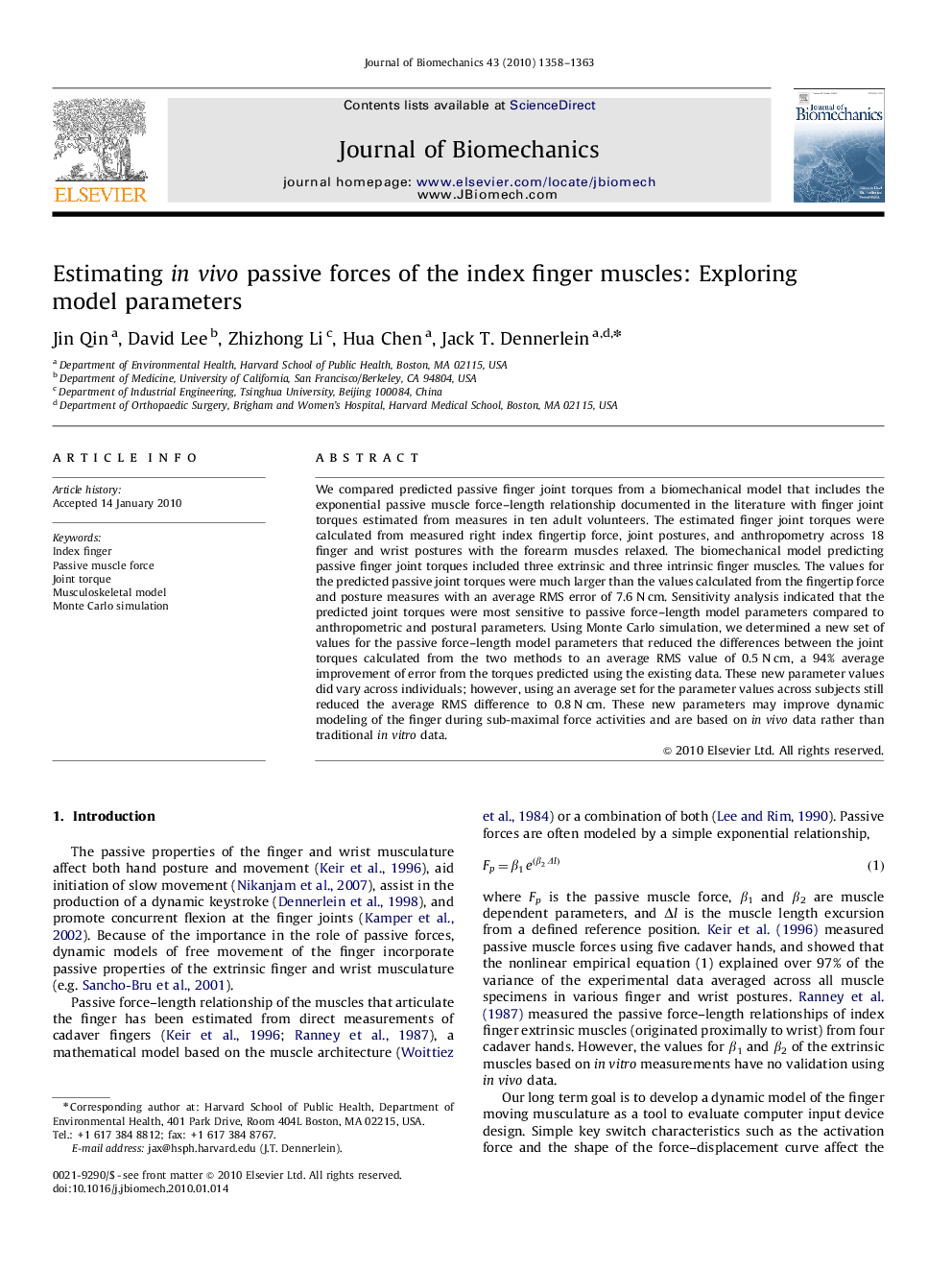| Article ID | Journal | Published Year | Pages | File Type |
|---|---|---|---|---|
| 873668 | Journal of Biomechanics | 2010 | 6 Pages |
We compared predicted passive finger joint torques from a biomechanical model that includes the exponential passive muscle force–length relationship documented in the literature with finger joint torques estimated from measures in ten adult volunteers. The estimated finger joint torques were calculated from measured right index fingertip force, joint postures, and anthropometry across 18 finger and wrist postures with the forearm muscles relaxed. The biomechanical model predicting passive finger joint torques included three extrinsic and three intrinsic finger muscles. The values for the predicted passive joint torques were much larger than the values calculated from the fingertip force and posture measures with an average RMS error of 7.6 N cm. Sensitivity analysis indicated that the predicted joint torques were most sensitive to passive force–length model parameters compared to anthropometric and postural parameters. Using Monte Carlo simulation, we determined a new set of values for the passive force–length model parameters that reduced the differences between the joint torques calculated from the two methods to an average RMS value of 0.5 N cm, a 94% average improvement of error from the torques predicted using the existing data. These new parameter values did vary across individuals; however, using an average set for the parameter values across subjects still reduced the average RMS difference to 0.8 N cm. These new parameters may improve dynamic modeling of the finger during sub-maximal force activities and are based on in vivo data rather than traditional in vitro data.
